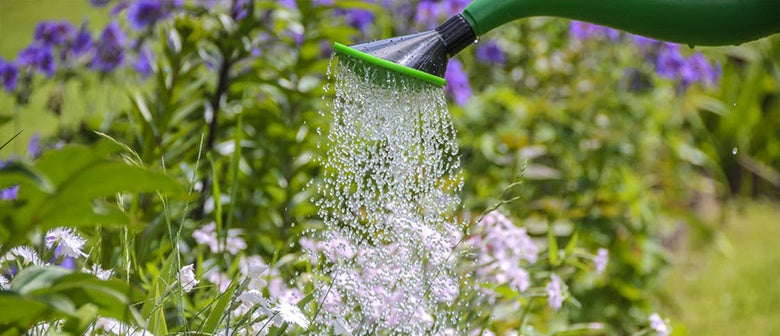The hot summer months can be a struggle for any garden. Three tips to keeping it looking lush and healthy are; soil preparation before planting, regular mulching and good water management.
Preparation
Preparing your soil before planting is vital to the health of your garden. Improve soil structure by adding in compost to your existing soil, this will add nutrients and improve water holding capability. Make sure you remove any old or dead plants and weeds.
Mulching
Regular mulching is important and will help you maintain a healthy garden. Practically any organic material can be used for mulching, such as bark, straw, lucerne hay, tree leaves. You can also purchase bulk or bagged mulch from one of our stores.
It’s best to wait until soil temperatures have risen before mulching, or you could risk ‘locking in’ cold, moist soils of the cooler months. The thickness of mulch should be enough to prevent the growth of weeds. As a guide, a layer 50-100mm thick around plants. Suppressing weeds means that your plants are not competing for root space and nutrients. Just made sure you remove all weeds prior to mulching.
Mulching also adds valuable nutrients to the soil as the mulch breaks down over time. This also improves soil quality and structure by encouraging micro-organisms and worm activity. Water retention is also aided by mulching, as evaporation is hindered, keeping moisture in the soil. Mulch regulates soil temperature, in warmer months the soil is kept cooler and in colder months, mulch insulates plants and their roots.
Water management
The success of your summer garden will largely depend on the careful monitoring of water supply to your plants. Make sure not to water your plants during the hottest part of the day, as this is when plants are heat stressed – early morning or evenings are best.
Some plants, such as roses, do require deep watering to encourage deep root development. Water until it begins to puddle at the top of the soil – this means that the soil has reached it’s water holding capacity. Make sure you avoid getting the foliage wet, as this can promote the spread of disease ion plants like tomatoes and roses – aim for the root zone instead.
The aim is to maintain a consistent watering regime. With many plants, trees and shrubs in particular, if they are not watered enough regularly enough over the summer months, they will stop growing.
Pots and containers dry out quickly over the summer months, thus they need to be watered regularly. Check that there are adequate drainage holes in the container prior to planting, if there aren’t enough, create more. When planting into pots, keep the soil level slightly lower so you can add a layer of mulch on top to help conserve moisture and stop your pot and the plant drying out. Don’t forget about your indoor plants as they can suffer as temperatures inside intensify. Increase watering and if necessary, re-position your plants – avoiding placing them too close to sunny windows.

